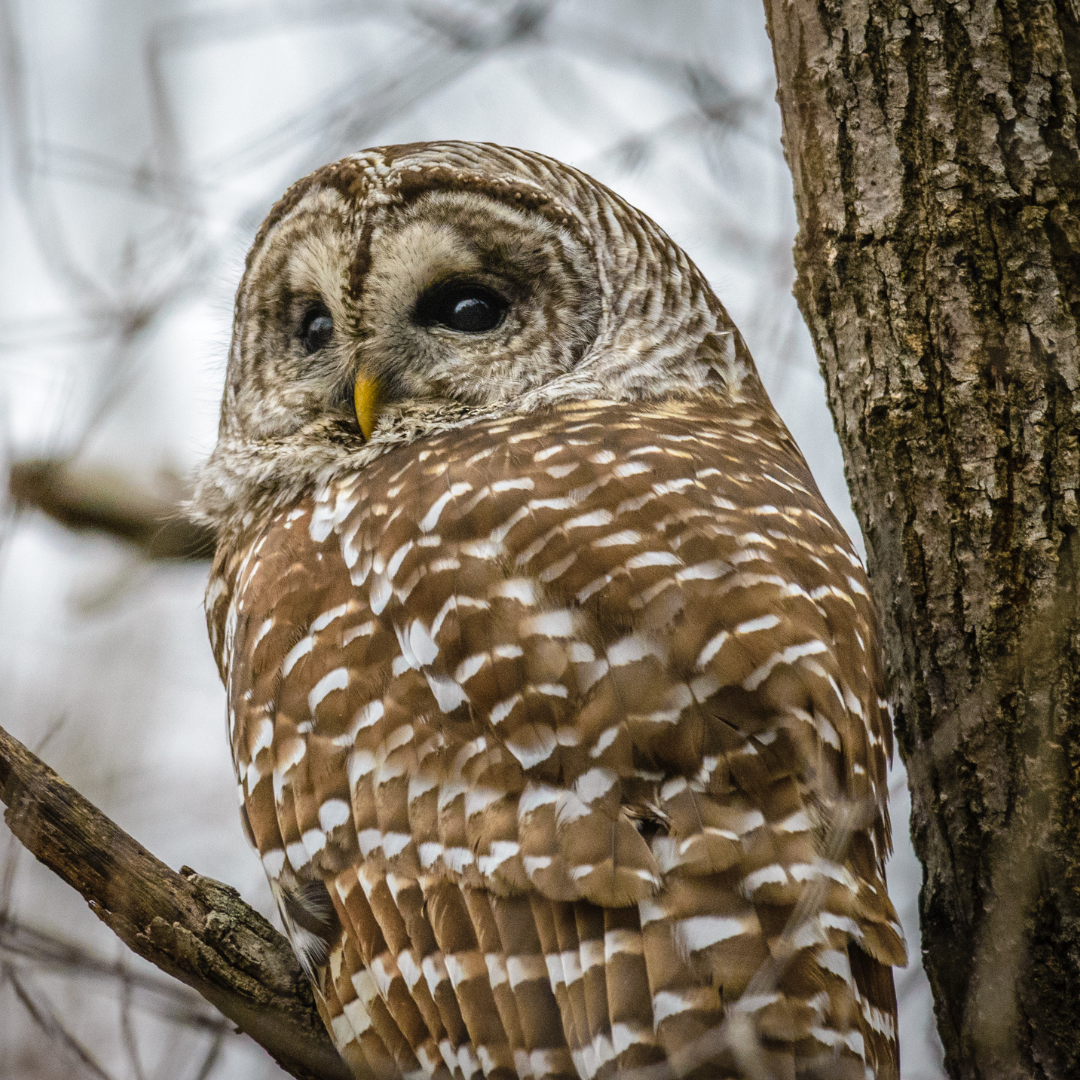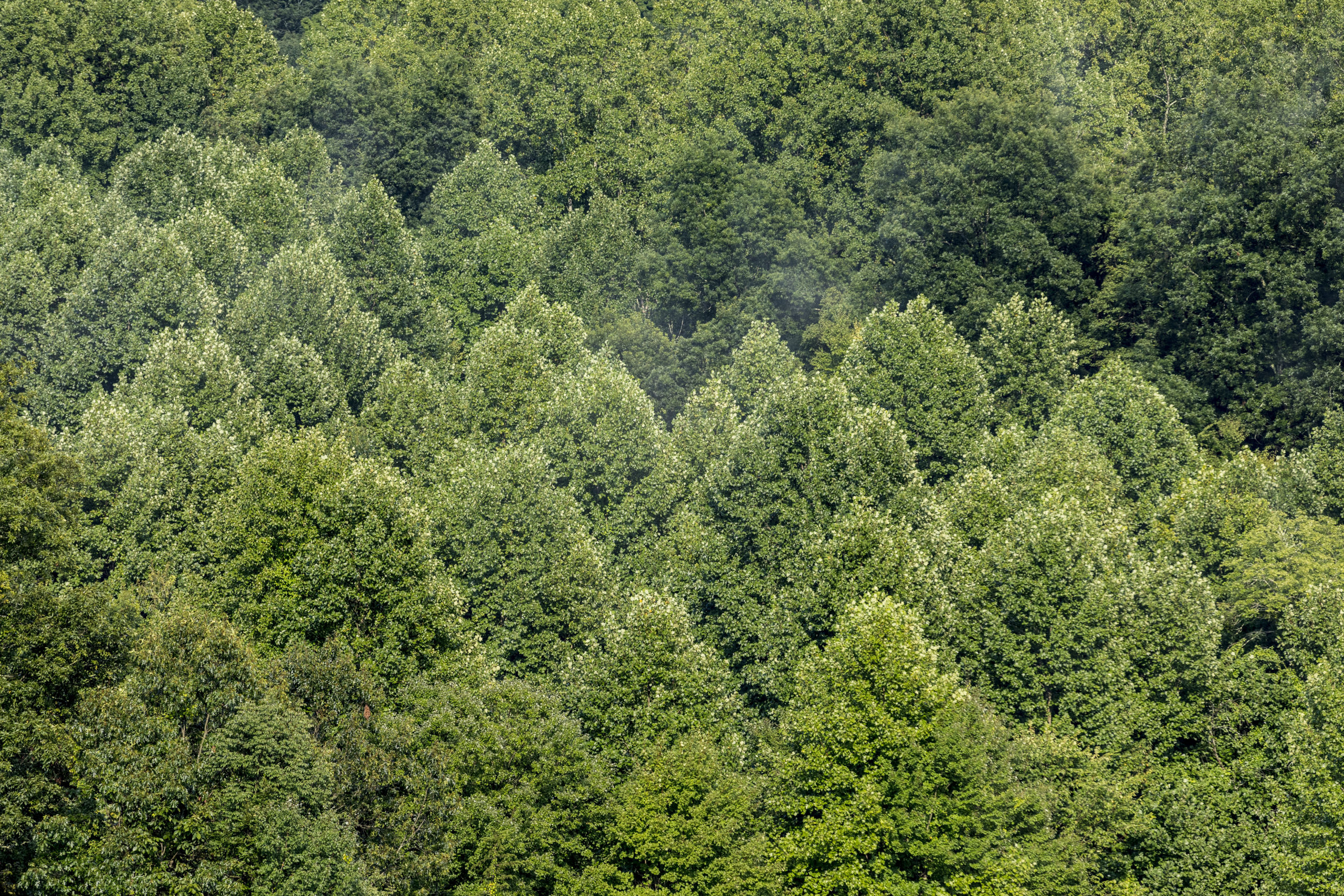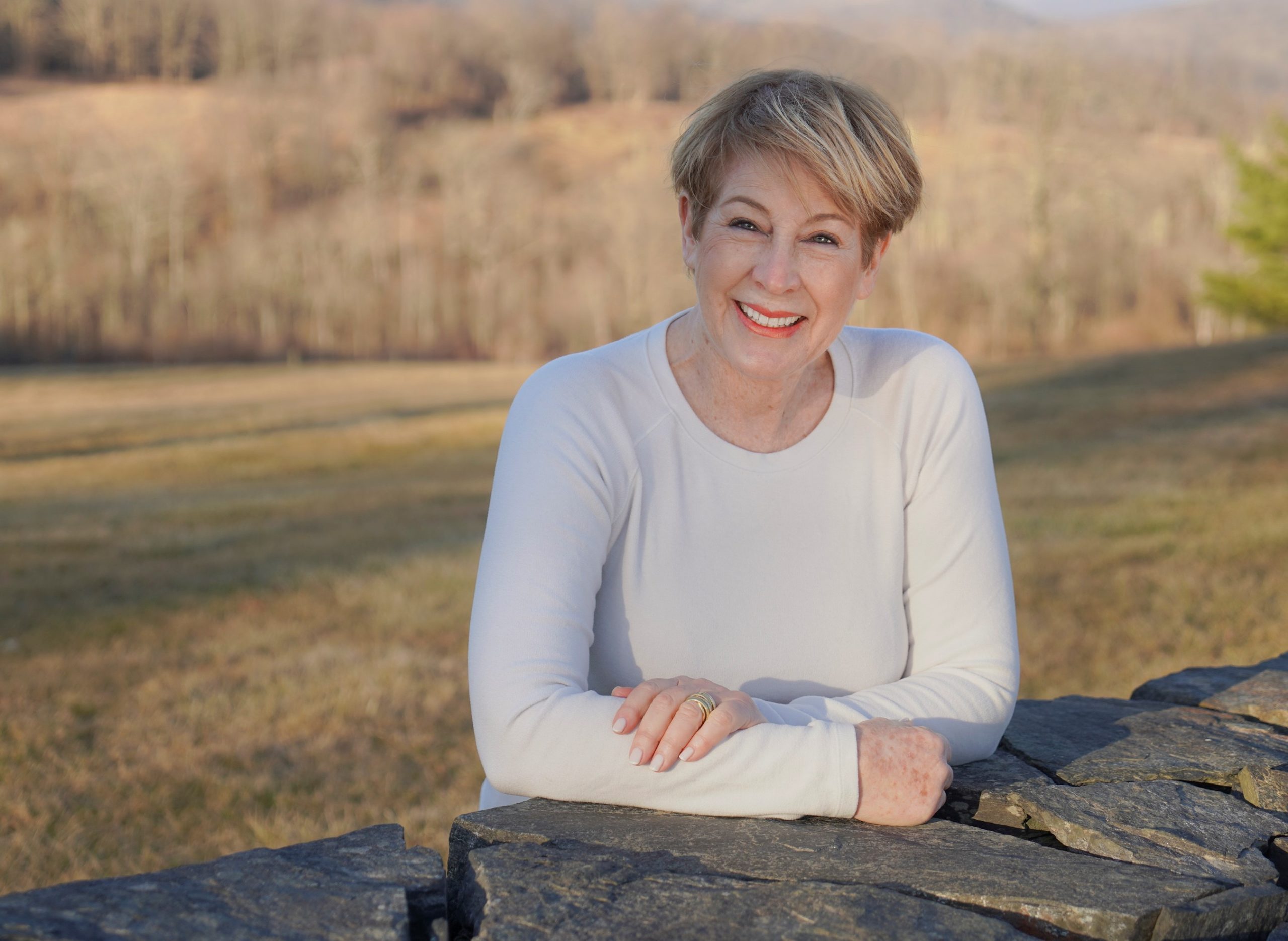Winter nights may seem cold and biting, but amidst the snow and wind, owls are out and about hunting and even nesting. An evening walk down a quiet street or your backyard is a great way to catch a few hoots or a toot. Great-horned owls, our largest breeding owl in Connecticut, are one of the earliest birds to nest. You may hear them gently calling their very deep, “Who’s awake, I am, are you?” Barred owls are not far behind with nesting, and their territoriality often results in a cacophony of caterwauling; listen for the familiar “who cooks for you, who cooks for you alllll.” Our smallest owl in Connecticut, the adorable and intriguing northern saw-whet owl often winters in our area, but many will make their way north again in March. Their eerie and abundant repertoire of sounds can be puzzling, but their soft, repeated “toot” can be heard now through their migration. Listen to these recordings of northern saw-whet owls, and try to listen for them one evening.
Get Outside This Weekend: Four Winter Hikes to Try
Five Reasons to Love Winter Walks
Winter’s days are shorter, and temperatures are dropping, but the good news is that we can reap the benefits of time in nature no matter the season. While it’s true that your layering strategy and jacket selection may take more thought, winter walks are a refreshing and restorative way to enjoy some of your favorite places. Here are five wonderful things about time in winter wonderlands.
- Time in nature benefits our mental health. A study from Stanford University found that people who walked for 90 minutes in a natural area showed decreased activity in the region of the brain associated with a key component of depression. That holds true even for cold weather walks. NCLC has 22 public preserves for your winter walks.
- Cold weather walking has physical benefits. Studies indicate that exercise in cold weather may improve endurance because the body does not have to work as hard to cool down. Exercising in cold weather can transform white fat, which stores energy, into brown fat, which is metabolically active and can burn calories to generate heat. Read more.
- Winter offers new perspectives of favorite places. Winter transforms the forests and fields. On winter walks you can see farther into the forest and take in views that are blocked by leaves in the summer. Next time you’re out, take time to marvel at that rocky outcropping now covered with icicles. We’re big fans of the rock formations at the Herrick Preserve.
- Snow makes it easier to spot animal tracks! Learning to identify tracks is a fun way to know who else is sharing the woods with you. Have you ever seen the imprint wings make as birds take flight from the snowy ground? Read more.
- Enjoy trails without the buzz of mosquitos. Need we say more?
You can continue walking NCLC’s 22 nature preserves all winter long. Here are two great resources to make your outings safe and successful.

Smyrski Farm Preserve Expanded! Safeguarding Agricultural Heritage and Natural Beauty
Northwest Connecticut Land Conservancy (NCLC) proudly announces the permanent protection of an additional four acres of pristine pastureland within the Smyrski Farm Preserve. This expansion underscores NCLC’s ongoing commitment to preserving the region’s agricultural legacy and natural landscapes.
Smyrski Farm Preserve, NCLC’s flagship agricultural property, has been an integral part of the local community since 2008. Initially gifted to NCLC through a generous bequest from siblings Sophie and John Smyrski, the 220-acre farm is now leased to dedicated local farmers. Linda and Nick Pouder of Mayapple Hill Farm raise Coopworth sheep and produce a variety of sustainable products, including grass-fed lamb, pastured pork, fresh eggs, wool, yarn, woolen blankets, and small-batch maple syrup. Bill Stuart Jr. of Stuart Family Farm grazes part of his herd of red angus cattle on the preserve.
The 220-acre farm, which protects over a mile of the West Aspetuck River—a pristine drinking water resource—is home to historic white barns and the iconic 1763 red barn, both listed on the State’s register of historic buildings. NCLC also uses the farm and its red barn for educational and community programs.
While the original bequest in 2008 included most of the farm, a crucial four-acre parcel, adjacent to the historic red barn, was not part of the Smyrski family’s ownership but was vital to the overall integrity of the farm. With the active support of the local community, NCLC was able to acquire and permanently protect this inholding, ensuring the continuity of the farm and the use of the property for educational and community events.
“NCLC extends heartfelt gratitude to the community members whose unwavering support recognized the historic, agricultural, and ecological significance of preserving Smyrski Farm. This collective effort ensures that this treasured landmark will benefit the generations to come,” said Catherine Rawson, Executive Director.
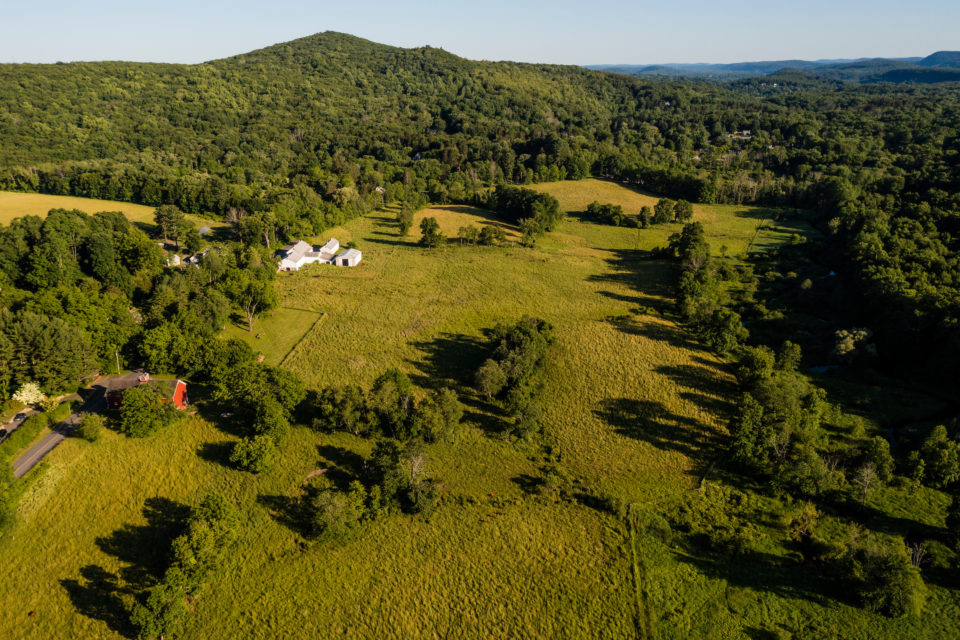
Blue Skies for the Annual Community Picnic
Blue skies and crisp fall weather prevailed for Northwest Connecticut Land Conservancy’s (NCLC) annual, free picnic on October 1. The picnic drew over 100 visitors, including members, neighbors, and conservation partners to the 45-acre Hadlow Preserve in Sherman, one of the most beautiful vistas in the area. Picnickers enjoyed a barbecue lunch, flew kites, and played lawn games. After lunch, people took time to enjoy the surrounding woods and fields and soak up the autumnal splendor.
From her perch sitting on the tailgate of a pickup truck, Linda Hubbard of Sherman, had a top-of-the-world view. As a fine art nature photographer and president of the Sherman Art Association, she feels a strong connection to the land. “I love conservation and protecting the land and I think NCLC is doing an incredible job,” she said. “It’s so important to save this land. It would have been so easy to develop it, to put up buildings here or someone’s big, gorgeous home. But to preserve it for us to enjoy and for me to be able to bring my grandsons here to hike on the trails is so special.”
Dedicated volunteers made the day possible, arriving early to set up long tables and yard games and to flip burgers. At the end of the picnic, volunteers helped to make cleanup a breeze!
While children were playing lawn games or flying kites, many area residents were mesmerized by the view from Kemp’s meadow, named in honor of P. Kempton Mandeville, a long-time treasurer of Naromi Land Trust. “I have driven past here a million times and I have never been up here, it’s stunning,” remarked a first-time visitor.
Erik and Cheyenne of Sharon discovered the Hadlow Preserve two years ago and it quickly became their favorite place to walk their doberman, Scarlett. Catherine Heald and her husband Donald, live adjacent to the preserve and often explore the trails with their golden retriever leading the way (dogs are allowed on NCLC preserves provided they are on a leash).
The Hadlow Preserve is part of Mary Hadlow’s legacy who bequeathed the property to Naromi Land Trust in 1998. She donated multiple other properties to Naromi during her lifetime, including the heart of the Mallory Preserve, another public preserve in Sherman. In 2020, Naromi and Weantinoge merged to form NCLC. NCLC is honored to celebrate Mary Hadlow’s legacy by inviting the public to experience the long views and cool breezes atop the hill.
Since 1965, NCLC has been dedicated to conserving working agricultural lands. In keeping with that mission, a large portion of the Hadlow Preserve is leased to the Leszczynski Family Farm for hay production. The preserve’s eastern fields are not mowed and are managed for grassland bird species of special concern, including bobolinks, savannah sparrows, and kestrels, which have begun to return to this protected land.
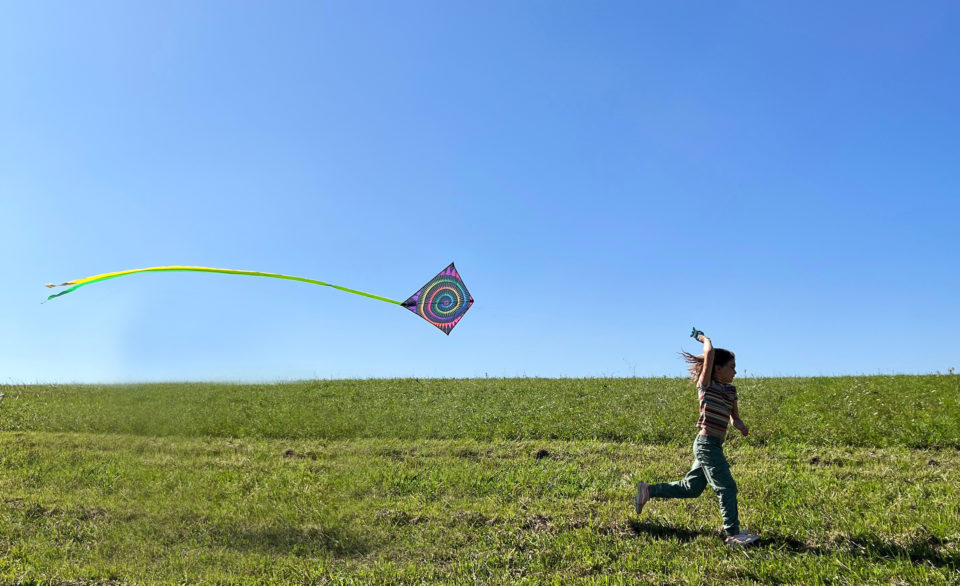
Remembering Mel Bristol
Melvin Lee Bristol, known to friends and family as Mel, passed away on June 10 at the age of 86. Mel served on the board of Naromi Land Trust (now NCLC). Mel was a dedicated steward of his land, Bloomingfields Farm, located in northern Sherman and contiguous with the Wimisink Preserve. His careful stewardship of his land helped maintain the ecological integrity of the Wimisink Preserve and in 2019 he granted an easement over the portion of his lands that abut the preserve, extending the buffer of protection around this special place.

On Saturday, June 10, Mel Bristol passed away at the age of 86. Until recently he resided at his beloved Bloomingfields Farm, where he had lived and worked since 1970. Mel is survived by his wife of 40 years, Diana Knapp Bristol; his three children Ann Crawford, Ben Bristol and Peter Bristol; his two stepchildren Hannah Knapp and Jeremy Knapp; his seven grandchildren: Jennifer, Justin, Bellamie, Emery, Elena, Alice, and Owen; and the two children of his late sister Irene Bristol Allen: Mark and Jennifer.
Mel was an active member of the Northeast Organic Farmers Association and brought the spirit of agrarianism to everything he did. He had a strong connection to the land. He believed in doing things in the old ways and being a good shepherd of his small farm. He loved to share his rich experiences with the local terrain and waterways. He nurtured plants, food, soil, and his flocks. By doing so, Mel helped to build a local movement in Connecticut about rethinking our relationship with the land, our farms, and our communities.
The son of Herman and Merle Bristol, Melvin Lee Bristol was born and raised in Collinsville, Connecticut. In addition to running a tree farm, his father worked for the Collins [Axe] Company, through which the family established ties with a number of salesmen and friends in South America. These connections in turn led directly to a formative year abroad for Mel in Sao Paulo, Brazil at the age of 14, which he often reflected on as a life-changing event that put him on a new trajectory as an explorer and naturalist. After returning from Brazil, Mel finished high school at Northfield Mount Hermon, became an Eagle Scout, and then went on to Harvard. As an undergraduate, his prior international experience in Brazil combined with his budding scientific interests earned him a coveted spot on an 18-month Harvard/Yale bird research expedition to India, Pakistan, Nepal and Bangladesh which was sponsored by the luminary ornithologist S. Dillon Ripley and led by Ray Paynter. Subsequently, Mel studied with Richard Schultes, author of The Plants of the Gods and a professor at Harvard who is widely considered the father of modern ethnobotany. Under Schultes’ guidance, Mel completed his PhD in Ethnobotany. His studies and dissertation focused primarily on the medicinal and shamanistic uses of certain plants by the Kamsá people of the Sibundoy Valley in Colombia, which have been published in the Botanical Museum Leaflets of Harvard University.
Just prior to leaving for Cuba for a summer of botanical research in 1959, Mel met Josephine Hart. They were soon married and starting a family, and lived in Cambridge, Colombia, Samoa, and Hawaii before eventually returning to Connecticut ten years later. During this period, Mel conducted sponsored research on the medicinal properties of plants and worked as a Professor of Botany at the University of Hawaii, in Honolulu.
In 1969 the family settled down in Sherman, Connecticut, where Mel set out to reclaim his agrarian roots and embrace the homesteading zeitgeist. With Josephine and her parents, Mel acquired 25 acres of fertile ground in northern Sherman and initiated the work of building a house and barns and tilling the fields. His family grew, crops were experimented with, a landscaping business came and went, and a new focus on daylilies and organic markets emerged.
Around 1980, a local architect introduced Mel to Diana Knapp and their relationship quickly solidified. With Diana, her children Hannah and Jeremy joined the family and farm. Together, Mel and Diana honed a singular vision for their home, meadows, sheep, chickens, daylilies, and kitchen gardens; and in so doing they helped to inspire a new generation of young farmers in Connecticut, with their focus on maintaining a small and balanced homestead and farming in harmony with the surrounding land and ecosystem. Together, Mel and Diana became leaders of and contributors to the New Milford Farmers Market, the Northeast Organic Farmers Association, the Saugerties Garlic Festival, and the conservation efforts of the Naromi Land Trust, the Audubon Society, and more.
At Bloomingfields Farm, Mel worked diligently to keep the old methods of farming alive. He embraced non-electric, non-mechanized methods as much as possible in the way of the Amish. He built a well-sweep with a stone counterbalance in the manner used for thousands of years in the Middle East. He cultivated a “living fence” in the farm’s East Pasture, made of cedar trees. Some years, he even scythed and raked acres upon acres of fields with his daylily workers.
When not working on the farm, Mel loved to spend time with family and friends exploring the waterways and terrain of the Hudson Valley, the Adirondacks, and Northwestern Connecticut. Mel was most in his element while in his canoe, paddling through marshes and other backwaters; while on cross-country skis, traversing the windswept cornfields of Dutchess County; while in his boots, ambling through the hill country of Litchfield County and beyond; or while sauntering around Bulls Bridge in Kent with his trusty hand-carved walking stick in hand, which he would use to point out the slow march of walking ferns through the landscape, or any other such botanical curiosities to a lucky companion or passerby.
In lieu of flowers, please consider a donation in Mel’s memory to either the Northwest Connecticut Land Conservancy or the Seed Savers Exchange:
Five Ways Forests Create Healthy Communities
Last year all of us on Earth lost over 56 million acres of critical forests – an area larger than all of New England and California combined. While tropical forests are particularly vulnerable, northern forests are also under attack from wildfires, suburban sprawl, and industry. Scientists say we need to increase and maintain forests to combat the effects of climate change. Here are just five of the ways that trees help protect us:
- Forests help reduce the frequency, intensity, and extent of flooding events: Forests are like sponges. The variety of tree species and non-tree vegetation creates a complex and multi-level canopy that intercepts rainfall. These plants also have a complex root system and deep layers of leaf litter, which can soak up water from rain and give it space and time to be gradually absorbed. Read more here.
- Forests help keep our drinking water clean: The complexity of vegetation that slows rainfall and reduces flooding also protects sources of drinking water. The slow infiltration speed reduces pollution in both surface water and groundwater and the trees and other vegetation remove pollutants. Read more here.
- Forests help fight climate change: A recent report from Harvard indicates that “New England’s forests are an underrated asset in the fight against climate change, already sequestering the equivalent of 14 percent of carbon emissions across the six states and capable of much more.” Read more here.
- Forests prevent species extinction: Forests are home to over two-thirds of the species that live on land. When we reduce forest size or raze them completely, we lose more than the trees – we lose the plants and animals that depend on those forested lands. More importantly, we destroy the life-giving biodiversity that supports all of the world’s ecosystems. Read more here.
- Forests keep us healthy. There is increasing scientific research that human health depends on large, intact, unfragmented forest ecosystems. From preventing infectious diseases to improving mental health, human well-being is linked to the health of our forests. In short, protecting and conserving forests makes us healthier. Read more here.
Conserving Northwest Connecticut forests is part of the global effort to protect 30 percent of the world’s lands and waters by 2030. NCLC is committed to accelerating the pace of conservation to help protect these critical ecosystems and the species that depend on them, including our own.
PRESS RELEASE: Northwest Connecticut Land Conservancy, Save the Sound reach agreement with MDC to protect 5,500 acres
PRESS RELEASE: Northwest Connecticut Land Conservancy, Save the Sound reach agreement with MDC to protect 5,500 acres
COLEBROOK, CT—A groundbreaking win for conservation in Northwest Connecticut is being celebrated by the Northwest Connecticut Land Conservancy (NCLC) and Save the Sound, who have reached a Memorandum of Understanding with The Metropolitan District (MDC) to protect 5,500 acres of land with a permanent conservation easement. A recent decision from the CT Department of Public Health (DPH), along with the MOU, instructs MDC to grant a conservation easement to NCLC on approximately 4,300 acres of pristine, forested lands surrounding the Colebrook River Reservoir in Connecticut and an additional 1,200 acres in Massachusetts.
The Memorandum of Understanding and the conservation easement protecting the lands were prompted by MDC’s move earlier this year to seek an abandonment permit for a 10-billion-gallon (BG) water storage space in the Colebrook River Reservoir. DPH granted the abandonment permit on July 20. Open space land surrounding drinking water supplies is currently subject to protections under state law. An abandonment permit could result in the 10 BG no longer being considered a potential drinking water supply by the DPH. Environmental organizations were concerned that such an abandonment could set a precedent that would potentially jeopardize the status of the land surrounding the reservoirs, which is currently open space.
“The permanent protection of these 5,500 acres of natural lands and forests surrounding the Colebrook and West Branch Reservoirs is exceptionally important to the region’s conservation future. The best way to protect our high-quality reservoirs, rivers, and streams is to protect the forested lands around them,” said Catherine Rawson, executive director of NCLC. “Through the vision and partnership of MDC and the state’s leading environmental organizations, these essential lands and waters will be protected for the public benefit forever.”
“Water supply lands are of tremendous value for the present and future generations of Connecticut and Massachusetts residents,” said Roger Reynolds, senior legal director for Save the Sound. “These lands are currently quasi-protected yet vulnerable to development, as their conservation is contingent on use of these reservoirs for water supply. This agreement adds an important layer of protection for human health, wildlife habit, water quality, and recreational access. The best way to protect the purity of future water supply is to permanently conserve the lands necessary to protect them.”
“It is important to note that each of the four Colebrook Reservoir towns—Barkhamsted, Colebrook, New Hartford, and Hartland – have submitted letters of support of the MDC’s abandonment application to DPH. For decades, these towns and their residents have partnered with the MDC and its staff in ensuring that the land surrounding the Colebrook Reservoir is maintained as a protected watershed and available for passive recreation,” stated Scott Jellison, MDC Chief Executive Officer. “We are not abandoning that partnership. Our environmental stewardship of this critical land area has been and will continue to be among the highest priorities. MDC and the watershed towns recognize the 10 billion gallons of future potential emergency drinking water would not be available during a drought and that the best use is for recreational and river benefits. The towns do not support diverting the reservoir for drinking water supply.”
MDC’s rights to 10 BG of water storage space in the Colebrook Reservoir/West Branch Reservoir system come through a contract with the U.S. Army Corps of Engineers. Upon termination of the contract, MDC will no longer have rights to the storage area nor the financial obligations that follow. If an abandonment permit is granted, MDC will continue to hold rights to 6.5 BG of water between the two reservoirs. A permanent conservation easement would ensure that this abandonment permit (if approved by DPH) and any future changes to the status of the remaining water resources in this watershed do not result in changes to the conservation status of the surrounding lands.
Under the terms of the new agreement, NCLC will purchase a conservation easement on 5,500 acres of MDC-owned land for $1 million. MDC will be permitted to continue its existing uses of the property. New public access to the property will be allowed for passive recreation such as hunting, fishing, hiking, and boating, subject to NCLC and DPH approval. Residential, industrial, commercial, and other forms of development will not be allowed. Save the Sound and Rivers Alliance of Connecticut requested and were granted a public comment period on the abandonment permit, given the importance of the decision for both drinking water supply and source protection land conservation.
Save the Sound, NCLC, Rivers Alliance of Connecticut, Farmington River Watershed Association, Connecticut Land Conservation Council, and The Nature Conservancy in Connecticut jointly submitted comments to DPH in support of MDC’s move to give up a portion of its water rights, noting the environmental benefits—particularly the potential for unrestricted water flow downriver, which, especially during low flow conditions, could improve aquatic life, river water quality, and ecological diversity within the downstream reaches of the river. In addition, the conservation easement on the lands will help to maintain “raw drinking water quality” in the remainder of the reservoir’s supply for potential future use. DPH is expected to issue a decision on MDC’s abandonment permit request on or about July 20.
“Protecting this large forest tract in its current state will forever preserve and protect the water in Colebrook Reservoir as a drinking water source but will also forever be a pristine source of freshwater downstream for the West Branch of the Farmington River,” said Aimee Petras, executive director of the Farmington River Watershed Association. “For over 50 years, the Farmington River has benefited from the augmented cold-water releases provided by the Colebrook Reservoir through Goodwin Dam, often at a flow rate higher than upstream in-flows. These flows, and their reliable high quality, have fostered a recreational fishery that is one of the best in the nation as well as a vibrant paddling community. Today we celebrate that these lands will forever protect what our Farmington River Community has grown to rely upon and will be forever protected for future generations.”
“The Nature Conservancy is thrilled that this new MOU will help protect such a large set of forested lands in the headwaters of the Farmington River,” said Sarah Pellegrino, Land Protection and Strategies Manager for the Connecticut Chapter of The Nature Conservancy. “In protecting these forests we are protecting not only their own rich biodiversity, but also one of the highest quality river systems in the Connecticut River watershed.” Amy Blaymore Paterson, executive director of the Connecticut Land Conservation Council, said, “On behalf of the Connecticut Land Conservation Council, I commend the Northwest Connecticut Land Conservancy, Save the Sound, and the Metropolitan District Commission for their visionary collaboration in preserving Connecticut’s precious natural resources. This momentous land conservation partnership has the potential to safeguard one of the state’s largest remaining contiguous blocks of forested land, ensuring clean drinking water, purifying our air, protecting wildlife habitat, and helping to mitigate the climate crisis by absorbing and storing greenhouse gases, among many other benefits. Their dedicated efforts are a shining example of how strategic partnerships can create a sustainable and resilient future for Connecticut.”

Margery Feldberg Elected Board President

Our Greatest Thanks to Hiram Williams
This January, after 12 years as board president of NCLC, Hiram Williams stepped down. He will continue to serve on the board. Hiram guided the organization through two mergers with Brookfield Open Space Legacy in 2019 and Naromi Land Trust in 2020 and built a resilient organization ready to meet the challenges of regional conservation work.
Under Hiram’s extraordinary service, the land protected by NCLC grew by over 4,500 acres, making NCLC the 22nd largest land trust in the United States by the number of lands protected. Landscape-scale conservation is a process that often unfolds over many years. With dedicated leadership, it creates lasting protection that safeguards water quality, habitat for wildlife, and farmland soils for future generations.
In December, we asked Hiram to reflect on his tenure with the organization. Hiram said, “I am proud of all that we have accomplished and excited about the future for NCLC and conservation in the northwest corner.”
Among his proudest accomplishments have been building an excellent staff led by Executive Director Catherine Rawson and a dedicated board of directors. “The combination of the two will enable us to meet some pretty significant conservation challenges in the next ten years,” he said.


